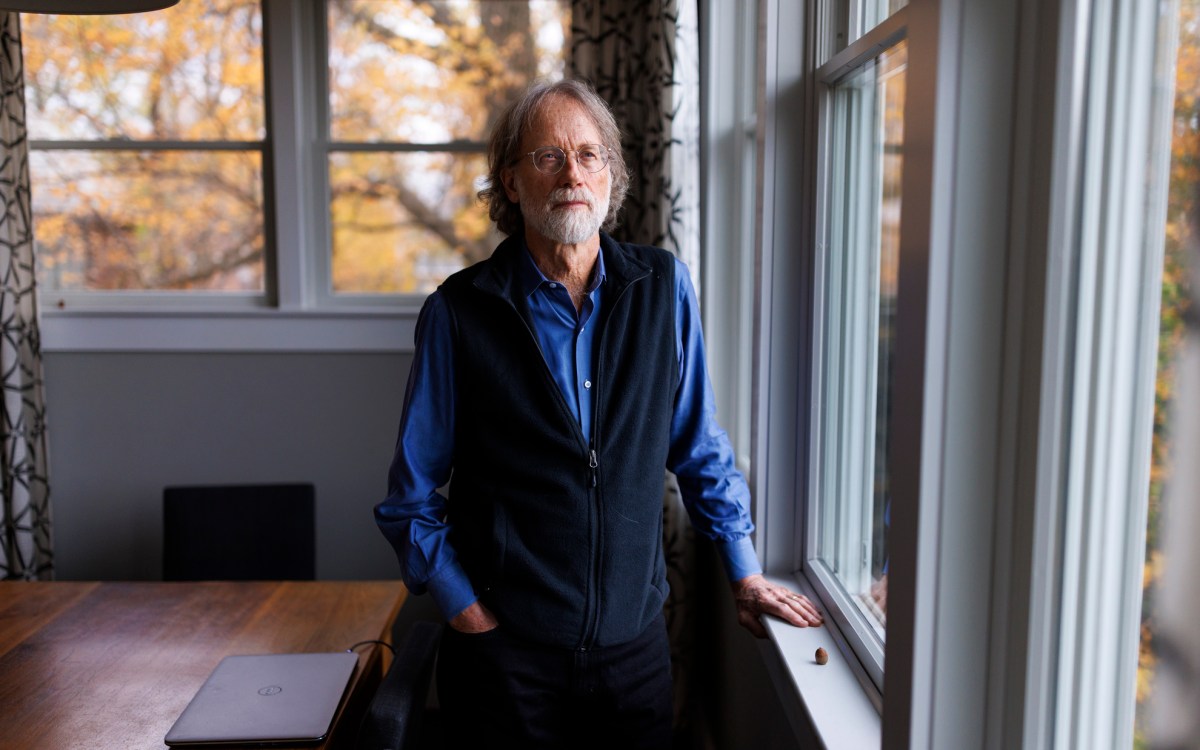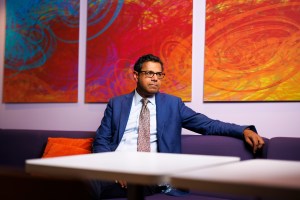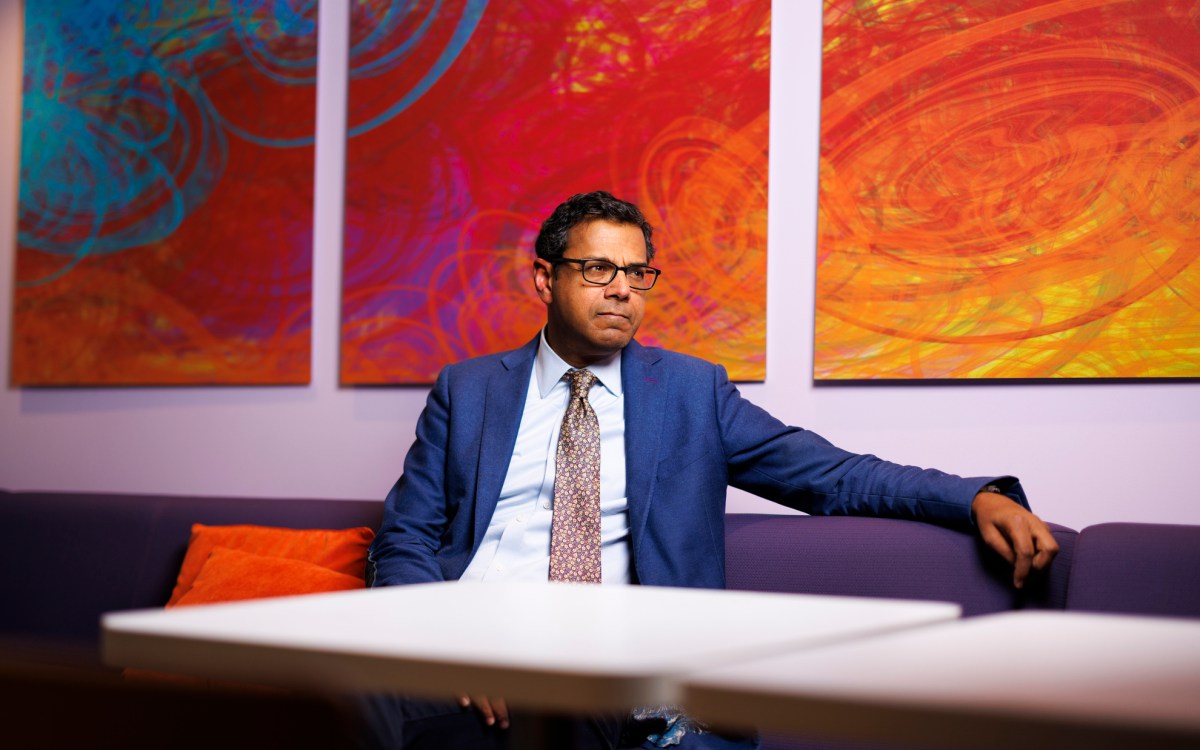Five named Early Career Scientists
Ten percent of all HHMI appointments nationwide
Five Harvard researchers are among 50 young scientists nationwide who will have their work supported for the next six years by a new initiative from the Howard Hughes Medical Institute (HHMI).
The selected scientists are at 33 institutions across the United States and have led their own laboratories for two to six years. An HHMI statement described the young researchers as “energetic and passionate about a broad range of scientific questions … at a career stage that many consider to be a scientist’s most productive — and most vulnerable.”
Three of the Harvard researchers — Amy Wagers, Konrad Hochedlinger, and Kevin Eggan — are members of the faculty of Harvard’s new inter-School Department of Stem Cell and Regenerative Biology (SCRB) and are principal faculty members of the Harvard Stem Cell Institute. The other two Harvard scientists named HHMI Early Career Scientists are Bradley Bernstein, a Harvard Medical School (HMS) assistant professor at Massachusetts General Hospital, and Rachel I. Wilson, an assistant professor of neurobiology at HMS.
Each of the new HHMI Early Career Scientists will receive a six-year appointment to the institute. HHMI will provide the researchers with his or her full salary, benefits, and a research budget of $1.5 million over the six-year appointment. The institute will also cover other expenses, including research space and the purchase of equipment.
Harvard Provost Steven E. Hyman hailed the selection of the young Harvard researchers as “a great day for these five young investigators, and a great day for Harvard. Receiving the support accorded an HHMI Early Career Scientist relieves Kevin, Konrad, Amy, Rachel, and Brad of many of the distracting stresses with which most young scientists struggle, and allows them each to fulfill their unique intellectual promise,” he said.
The selection, added Hyman, “speaks volumes about the strength of our science, and the kinds of young scientists we have been attracting and nourishing.”
The HHMI statement points out that “the creativity and energy that researchers bring to starting their own labs can quickly be sapped by the time-consuming and often frustrating quest for funding. Within a few years of a new faculty appointment, a researcher’s institutional start-up funds typically come to an end. Pressure to secure federal grant money may lead to ‘safe’ grant proposals. As a result, creative and potentially transformative research projects may fall by the wayside.”
The HHMI appointments come at a particularly crucial time in the ongoing struggle for research funding. While the NIH has received an infusion of Economic Recovery Act funding, the agency’s support for biomedical research has been flat for more than five years, and in real dollars has decreased by more than 13 percent.
Because of that situation, competition for funding has become ever stiffer, and the funding that has been available has tended to go to more established researchers with “safer” proposals. In fact, the average age at which researchers now receive their first R01 grant, the major grant that is seen as establishing their independent careers, is 43.
Neurobiologist Wilson echoed precisely that point. “This award makes it possible for me to pursue research directions that are more adventurous than the research I would otherwise be able to pursue. It’s a difficult funding climate right now, and so I feel especially lucky and grateful for the financial security this award provides to my lab for the next few years,” she said.
Similarly, Hochedlinger noted that “support from the HHMI will allow me to go into directions which I would have otherwise not been able to do in the current funding situation. For example, I will be able to invest in new tools and technologies to study pluripotency and reprogramming and hire people to bring new expertise into my lab.”
“We saw a tremendous opportunity for HHMI to impact the research community by freeing promising scientists to pursue their best ideas during this early stage of their careers,” said HHMI President Thomas R. Cech about the institute’s $200 million investment in the young researchers. “At the same time, we hope that our investment in these 50 faculty will free the resources of other agencies to support the work of other outstanding early career scientists.”
HHMI announced the new Early Career Scientist program a year ago, and launched a nationwide competition “seeking applications from the nation’s best early career scientists.” Those working in all areas of basic biological and biomedical research and areas of chemistry, physics, computer science, and engineering that are directly related to biology or medicine were invited to apply. The competition drew more than 2,000 applicants.
HMS’s Bernstein, who is affiliated with the Harvard Stem Cell Institute, said the HHMI six-year, nonrenewable appointment gives “our laboratory a wonderful opportunity to pursue hypotheses and potentially risky new research directions aimed at understanding how genome function is regulated in mammalian development and disease.”
“I am thrilled and honored by this opportunity to join such a distinguished group of scientists,” said Wagers, whose laboratory is at the Joslin Diabetes Center. “I am particularly happy to share this honor with two colleagues in the SCRB department, Konrad Hochedlinger and Kevin Eggan. The three of us established our labs at roughly the same time, and have collaborated and supported one another throughout.”





